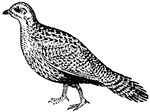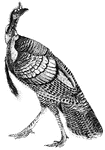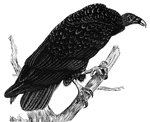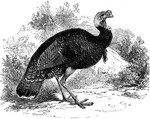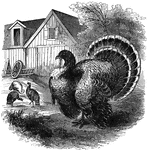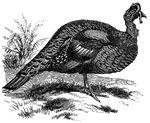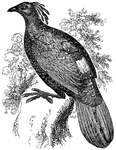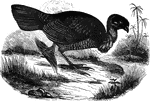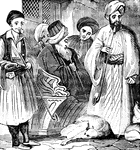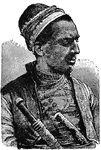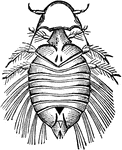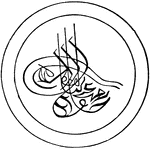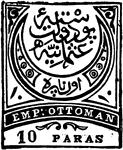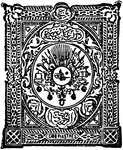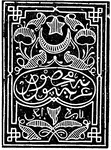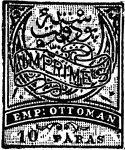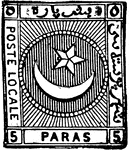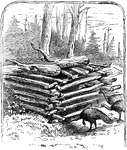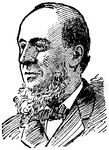
J. B. Angell
(1829-1916) American educator, editor of the Providence journal and minister to China and Turkey

Fig
Figs are native to Turkey and Northern India. It was one of the first fruits cultivated by humans. In…

Edward Lear
There was an old man of Coblenz; The length of whose legs was immense; He went with one prance; From…

Turkey Vulture
The Turkey vulture is found over the whole United States, but is more numerous in the southern region…

Turkey Vulture
Vultures are carrion eaters. The head and neck are usually bare, and the bill and claws weaker than…

Battle at Willis Church
"Battle at Willis Church, Monday, June 30th, 1862- the Federal forces, under General Heintzelman, engaged…

Battle of Malvern Hill
"Battle of Malvern Hill, near Turkey Bend, James River, Va., fought Tuesday, July 1st, 1862. The battle…

Commodore Barney
"The war in Virginia. Explosion of a torpedo under the Commodore Barney, on James River, August…
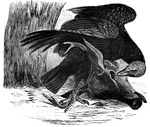
Black Vulture
Genus Coragyps, about the size of a small turkey. This one is feeding on a cow's head.

Turkey Buzzards
Genus Cathartes, found in the Americas, sometimes as far north as New England. These buzzards…
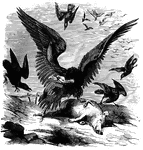
Black Vulture
Black vulture (or carrion crow), genus Coragyps, about the size of a small turkey. This group…
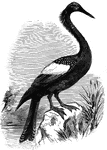
Anhinga
Also known as the snake-bird, the anhinga inhabits the freshwater areas of the South Atlantic States;…

Battle at Willis Church
"Battle at Willis Church, Monday, June 30th, 1862- the Federal forces, under General Heintzelman, engaged…
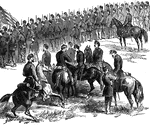
Battle of Malvern Hill
"Battle of Malvern Hill, near Turkey Bend, James River, Va., fought Tuesday, July 1st, 1862. The battle…

Battle of Malvern Hill
"Battle of Malvern Hill, near Turkey Bend, James River, Va., fought Tuesday, July 1st, 1862. The battle…

Battle of Malvern Hill
"Battle of Malvern Hill, near Turkey Bend, James River, Va., fought Tuesday, July 1st, 1862. The battle…
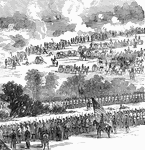
Battle of Malvern Hill
"Battle of Malvern Hill, near Turkey Bend, James River, Va., fought Tuesday, July 1st, 1862. The battle…

Battle of Malvern Hill
"Battle of Malvern Hill, near Turkey Bend, James River, Va., fought Tuesday, July 1st, 1862. The battle…

Araba
"A heavy, springless wagon, usually covered with a screen as shelter from the rays of the sun, drawn…
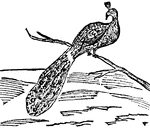
Peacock
The male of a gallinaceous fowl, about the size of the turkey. The rump feathers are long and capable…

Wood Engraving
"The wood used for engraving is boxwood, nearly all of which is imported from Turkey." —The Popular…
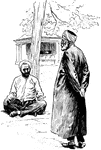
Turkish men
"There are scores of men in long gowns, with white, red, blue, or green turbans about their heads."…

Opium
The milky juice obtained fom the unripe capsules of several species of the poppy, which is rendered…
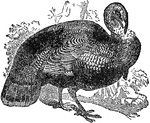
Turkey
A large bird native to America, It was first brought to Europe when Hernando Cortez returned to Spain
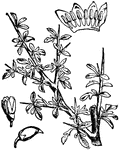
Myrrh
"Myrrh, is the name given to a gum resin which exudes from a shrub growing in Arabia and Abyssinia,…
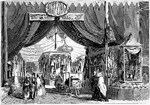
Crystal Palace Turkish Department
The entrance to the Turkish Department at the Great Exhibition of 1851 shows a fabric-draped ceiling…

Angora Goat
The Angora goat is named for the region in Turkey where it is from and is known for its long coat.
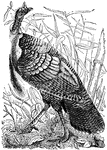
Wild Turkey
"The turkey is indigenous to America; and it may still be found in some parts of our country in the…
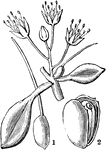
Doveweed
"Eremocarpus setigerus. 1. a young pistil; 2. a ripe fruit after dehiscing." -Lindley, 1853

Turkey Foot Rock
Turkey Foot Rock was the location where Me-sa-sa, an Ottawa Indian chief, died during the Battle of…
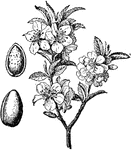
Almond Tree and Fruit
The almond is native to Iran, from northwestern Saudi Arabia, north through western Jordan, Israel,…

